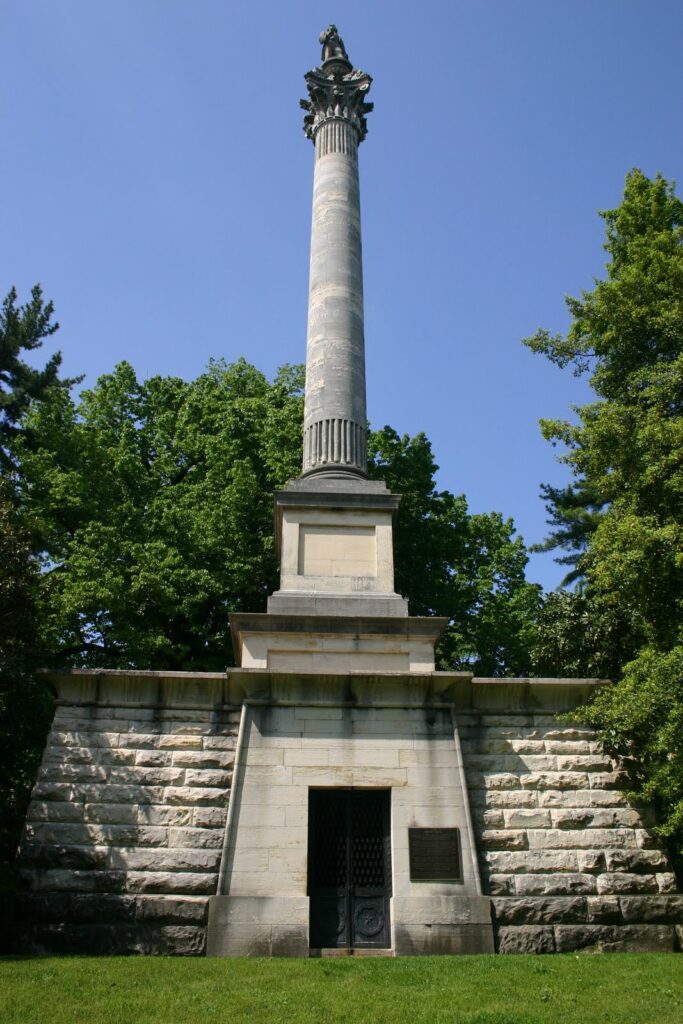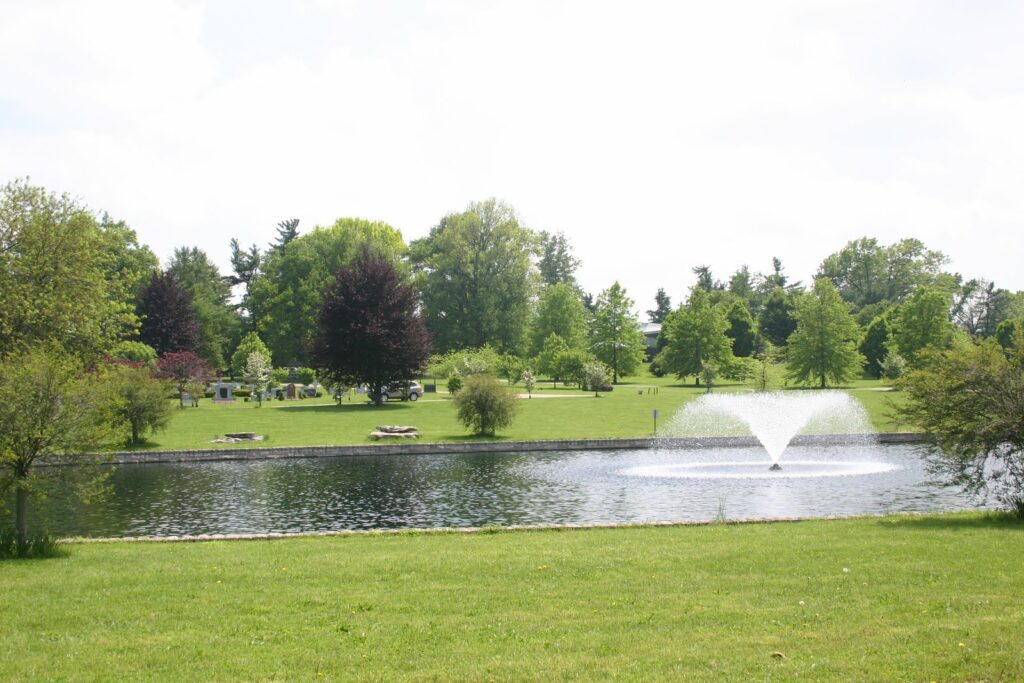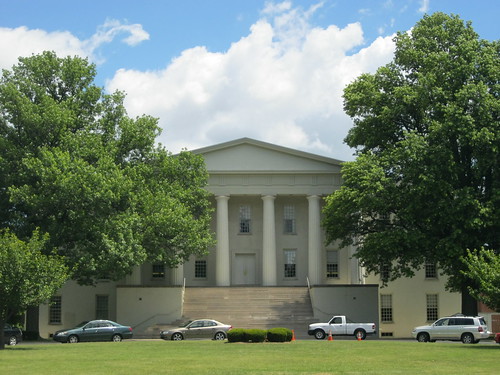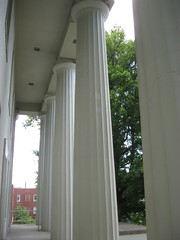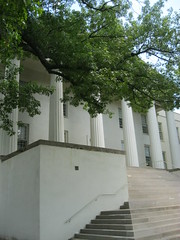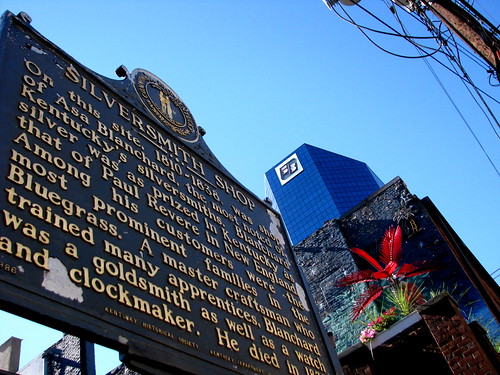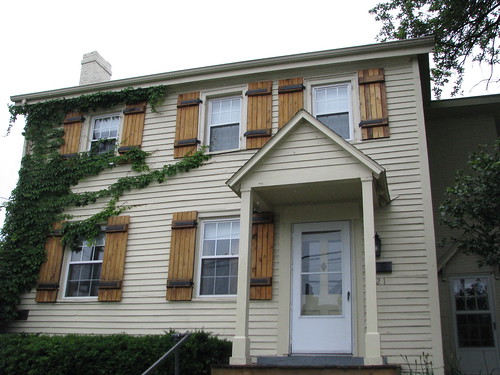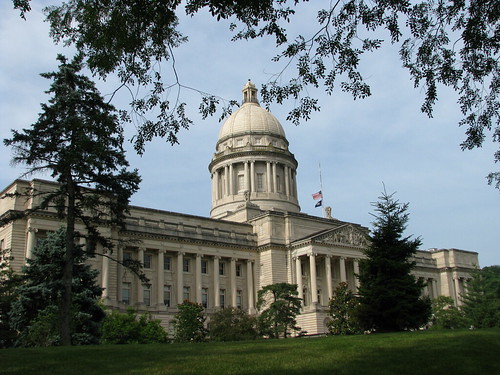Each month, the Bluegrass Trust for Historic Preservation offers a deTour to visit a local historic site that has been well-preserved and restored. Please join us on our next deTour. Details on Facebook!
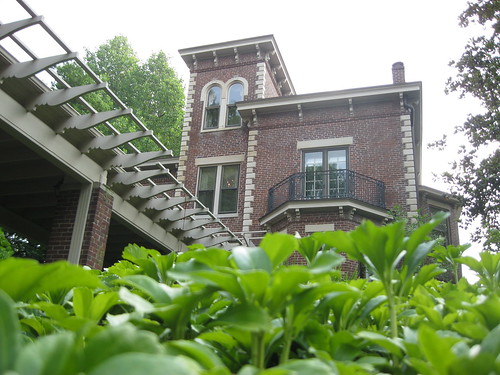 |
| Maxwell Place – Lexington, Ky. |
On a very warm afternoon in early June, we gathered on the circular driveway of a brick Italianate villa nestled in the center of the UK campus – right between the Guignol Theatre and the Chem-Phys Building. While architecturally unique and impressive in its own right, Maxwell Place particularly stands out between its mid-20th century neighbors.
Our guide was none other than First Lady Patsy Todd – a wonderful woman who, with her husband President Lee Todd, have led the University of Kentucky since 2001. One of the couple’s first tasks upon arriving at Maxwell Place in 2001 was to have the hedges that surrounded the property removed, allowing visitors, including students, to wander through the grounds. It was a big change welcomed by the students!
Maxwell Place is a storied place in Lexington’s history. Its name comes from Maxwell Springs – a natural spring that was one of three that crossed near the property before feeding the Town Branch of the Elkhorn Creek. The present Guignol Theatre rests above Maxwell Springs and some memory of the old water features exists in the low-lying areas just south of the University’s Student Center. Henry Clay once said, “No man can call himself a gentleman of Kentucky until he has watered his horse at Maxwell Springs.”
Maxwell Springs received its name from the area’s landowner, John Maxwell. Maxwell was one of Lexington’s earliest pioneers and, it is said, he named the original encampment at McConnell Springs “Lexington” after the recent Revolutionary War victory. With a 1,000 acre tract acquired from fellow pioneer Robert Patterson, Maxwell owned much of what became southeeast Lexington.
During the Civil War, the present-day University campus was occupied by Federal troops and its trees were felled for heating fuel. The owner of the land, the Maxwell Springs Company, couldn’t keep up its payments during the War and in 1870 the entire parcel was sold in a judicial sale.
The “most active and influential” of city councilmen, Dennis Mulligan, led the City of Lexington to acquire the majority of the land at the sale for use as a City Park, while he individually purchased a narrow strip of land on Rose Street. Mulligan, it should be noted, was an Irish Catholic political boss and many believe it was his political machine which boss Billy Klair would later steer and perfect.
On this narrow strip, Mulligan built for his son a wedding gift: Maxwell Place. The son, James Hilary Mulligan, would serve in a number of political offices in Kentucky, in Washington and abroad. As Speaker of the Kentucky House, Mulligan would retain the services of a young Billy Klair as his page. Mulligan is best remembered, however, for a poetic speech he delivered at the old Phoenix Hotel in Lexington in 1902 entitled, In Kentucky . A copy of the poem hangs in the library at Maxwell Place.
Lexington, vying for the state university and facing strong competition from a Bowling Green bid, offered its old Maxwell Springs land and the rest is University of Kentucky history. The Mulligan family sold its 13 acres, including Maxwell Place, to the University in 1917 for $40,000.
The original architect of Maxwell Place is unknown, though it is believed to have been either Thomas Boyd of Pittsburgh, Pa. or Phelix L. Lundin of Lexington. The two-and-a-half Italianate has been added to and remodeled throughout the years, but many of its original features remain intact. One of its most iconic additions is the arts-and-crafts pergola that stretches from the residence to the circular drive.
Maxwell Place has been the home to many University of Kentucky presidents during its service to the University. It has also been the host destination for many visitors and dignitaries, including First Lady Eleanor Roosevelt who stayed at house in 1934. Despite its storied past, Maxwell Place faced its critics: in the late 1960s, Maxwell Place was slated for demolition as part of the University’s development plan. Fortunately, an effort to preserve the historic structure succeeded so that we can enjoy this property today. Soon Eli Capilouto, the 12th University of Kentucky President, will call Maxwell Place home.
You can check out more pictures of Maxwell Place on my flickr account.
Bibliography
Bossism and Reform in a Southern City: Lexington, Kentucky, 1880-1940
Kentucky Encyclopedia, “John Maxwell” and “Maxwell Springs“
Lexington Herald, p. 1. Oct.18, 1967. (local.lexpublib.org)
National Register of Historic Places, “Maxwell Place”
